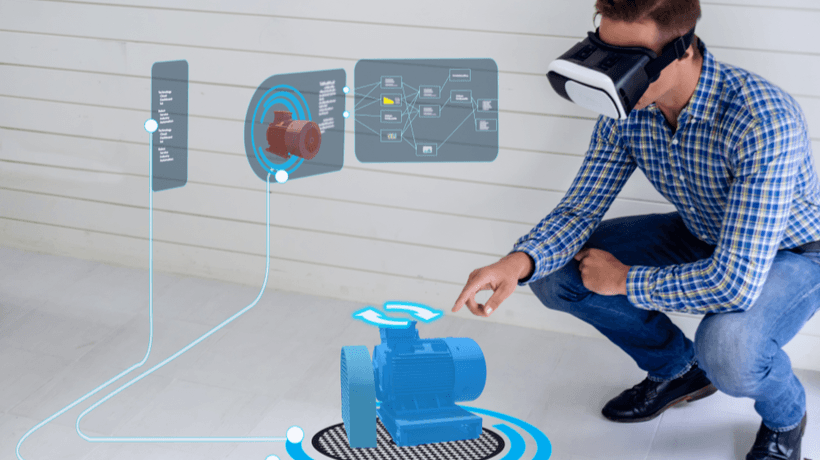Why End User Training Needs To Be Consumerized
Surprisingly, though, enterprises still continue to believe that legacy methods like Instructor-Led Training (ILT) is going to make their employees perform better. This belief is based on the notion that the enterprise workplace still remains largely untouched by consumerization.
But that’s far from the truth.
A few years ago, microlearning influencer, Stephen J Meyer, shared an interesting conversation that he had with a sales trainer. Meyer was once observing an ILT sort of training session for salespersons at an organization. And intrigued, he later asked the trainer if he thought the training session would be effective. Surprisingly, the trainer himself bluntly replied in the negative. The trainer apparently even said that everything he spoke would be forgotten instantly and none of the resources he provided would ever be effectively put to use.
Well, that's how employees are. And this was 4 years ago.
Consumerization Of The Workplace Is Happening Right Now
In 2017, companies across the United States spent $93.6bn on training their employees and still 40% of all training was ILT based. Imagine the returns companies would have got on this investment. The fact is that legacy end user training methods belong in a pre-consumerized world when employees were still not exposed to applications like Amazon, Uber, Airbnb, or Netflix.
The first iteration of workplace consumerization was about BYOD and letting employees work on their personal devices. But the average workplace has come a long way from there.
The second iteration of workplace consumerization is about delivering an employee experience that is on par with the experience that they have to expect as consumers. Moreover, end user training plays a vital role in the overall employee experience because that’s an important point of interface between the organization and the employee.
Consumerization has completely changed the dynamics of the organization-employee relationships. Today, the workplace is all about delivering a great employee experience as products are about to deliver a great customer experience. And great experience is delivered when consumer expectations are exceeded, if not met.
This Is The Lesson For End User Training From Consumer Applications
Why is it that Amazon is worth more than $700bn, why is Uber valued at $100bn? Why are Netflix and Airbnb valued at $134bn and $31bn each?
It’s simple logic. They succeeded in bringing all the demand for a particular service to one place. Essentially, they are aggregators of demand. And they succeeded in aggregating and compounding the demand because they were able to build an application that made the entire process digital and extremely simple. In other words, they redefined customer experience.
And so, consumers flocked to those building up the demand.
The lesson here is that if companies want to generate a good level of return on their end user training, they need to deliver a great experience. How do you do that? Simple. Deliver training that actually aids them in their job functions and satisfies their needs and expectations.
End User Training Can’t Escape Consumerization
To reiterate, consumerization of the workplace is happening right now. Employee behavior and expectations are changing by the day and these expectations are strikingly similar to what they expect from brands as end consumers. Like the rise of digital transformed customer experience, the rise of digital in the workplace is transforming Learning and Development.
Consumers use Netflix because they can watch the show of their choice, at the time of their choice and at their convenience. Employees, too, want to be trained at their own pace and at the time of their need. As the recent LinkedIn Workplace Learning report for 2018 found out, 58% employees prefer to learn at their own pace while 49% of employees prefer to learn at the point of their need.
Again, people use Uber because they don’t want to waste time on the street looking for a cab. In the same vein, employees don’t want to spend time in disjointed training sessions that pull them off their work. They just don’t have the time.
The reason Netflix, Uber, Airbnb and Amazon succeeded was because they took the supply of services right where the end consumers are: to their smartphones. In today’s digital age, this is the number one principle for organizations to follow. Take training to where your end users or employees are: right on to the platforms they are using and satisfy their on-the-job needs. That’s where the supply of end user training should be. That’s what consumerization of end user training is all about.
Digital Training Is Not Just About How It’s Accessed But About True Unification
It’s easy to confuse the above principle and think that organizations are already doing what needs to be done. It’s true that 94% organizations are already offering their employees means of digital learning and training. These could be virtual classrooms, an LMS, or social learning.
These are digital tools but they are not disrupting the way end user training is imparted. Digital training is not just about how it’s delivered but also where it's delivered. True digital end user training is about unifying the point of need and point of delivery. Delivering training within the application to upskill employees or end users at the time of need without forcing them to alternate between the 2 points.
As we progress through the 21st century, half of all workforce will be Millennials. Millennials who are more consumers than employees and will rapidly usher in a consumerization of the workplace. Organizations need to be ready and ensure that they are in a position to meet their employee expectations and do this at scale.
There’s No Time To Be Lost
The trainer Stephen J Meyer was right in saying everything he taught would be forgotten instantly. But why would that be? Because, as consumerization is kicking in, end users are keenly looking for the practicality of any activity. As said earlier, be it, employees or consumers, time is a precious resource. Consumers and employees will embrace technologies that value their time and deliver results for them. Be it Uber which delivers cabs instantly or Airbnb which delivers places or stay instantly or even training methods which help end users upskill instantly.









